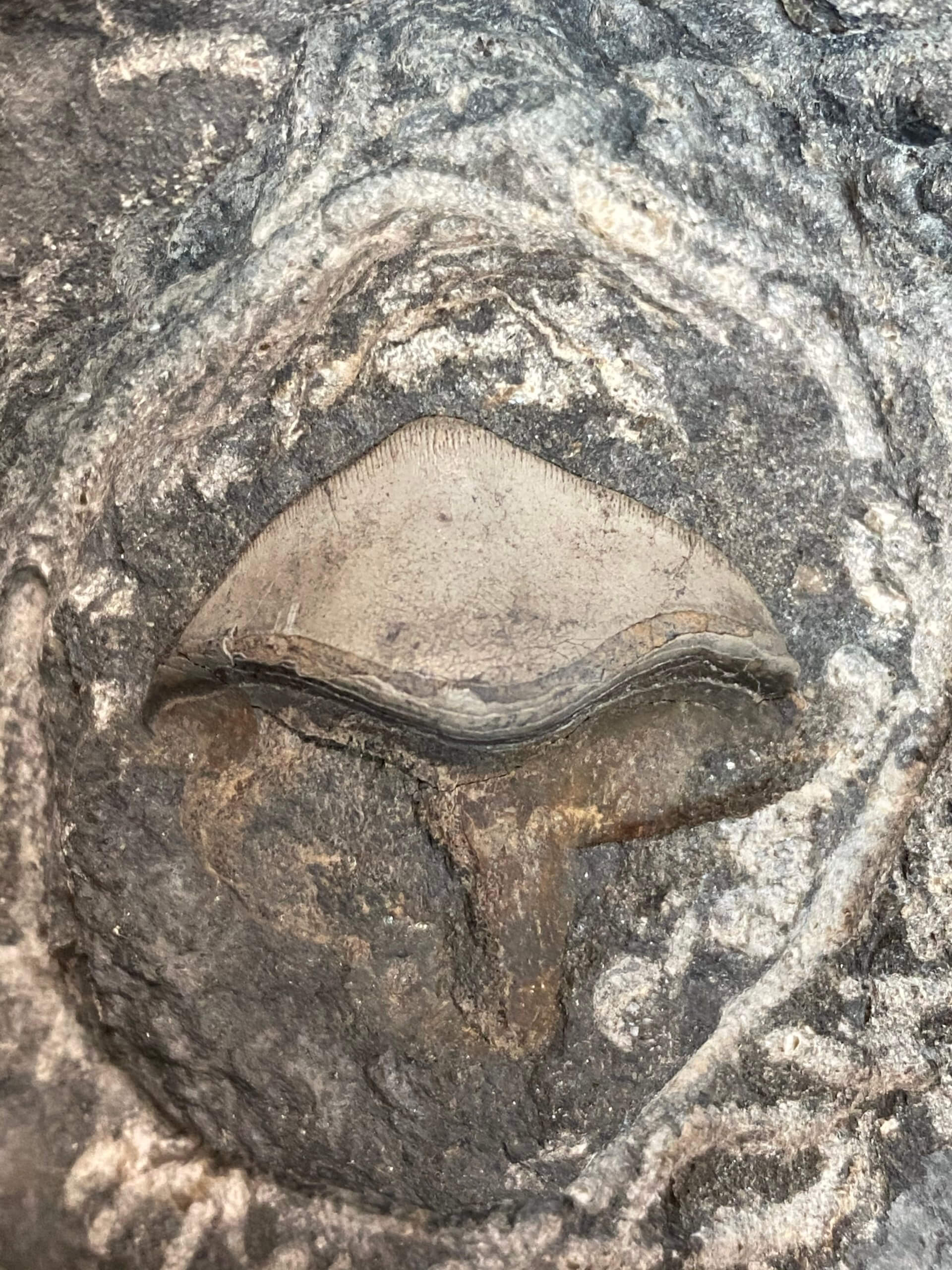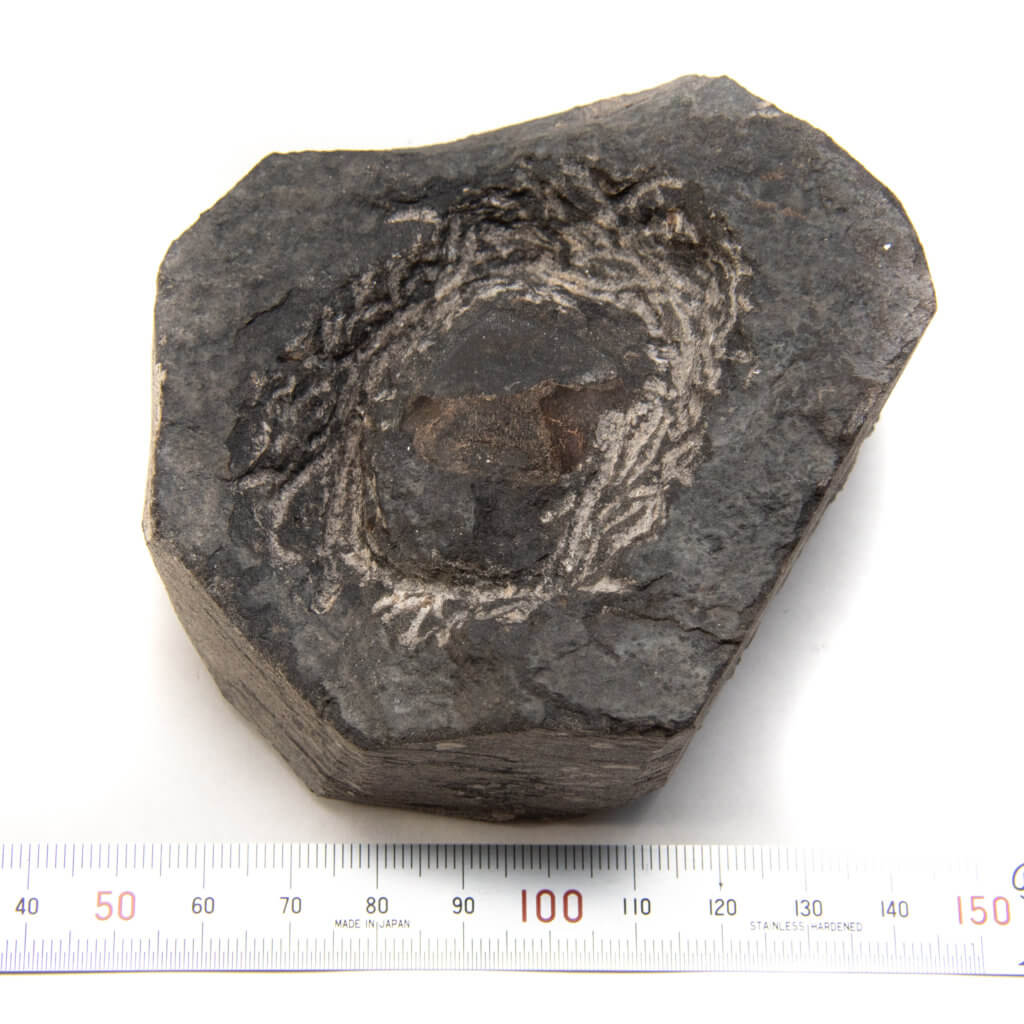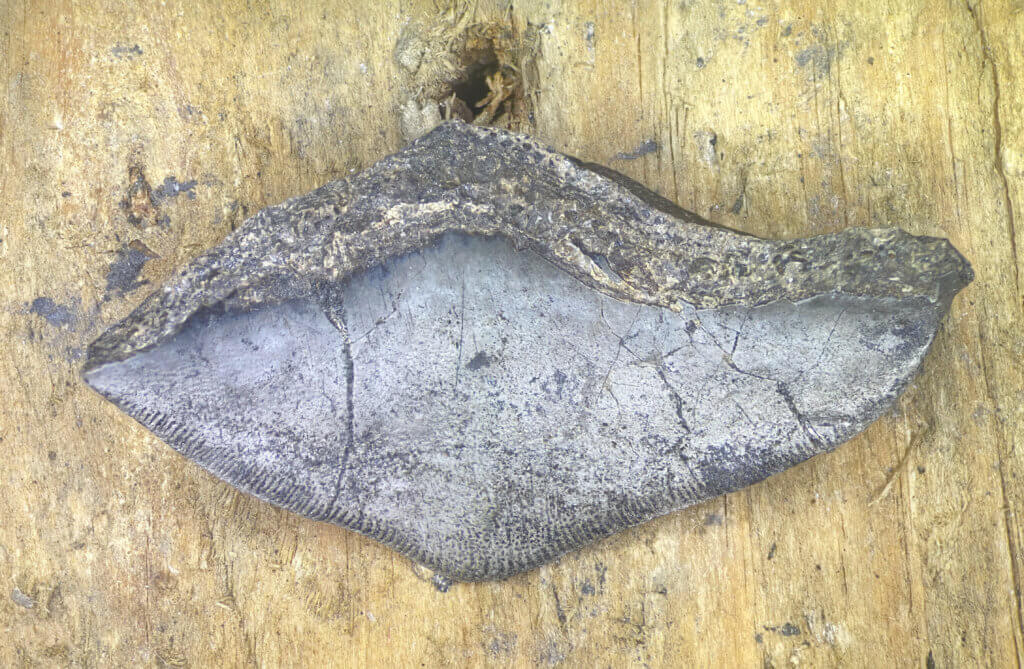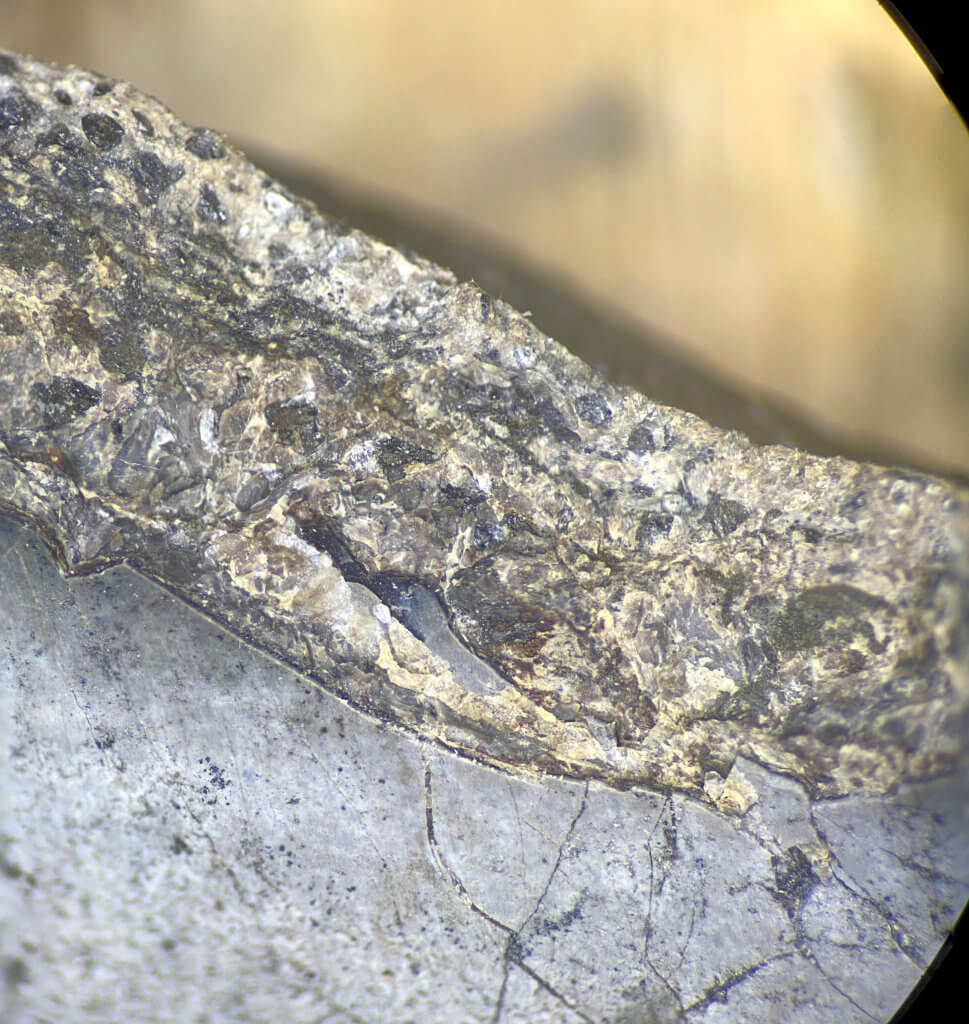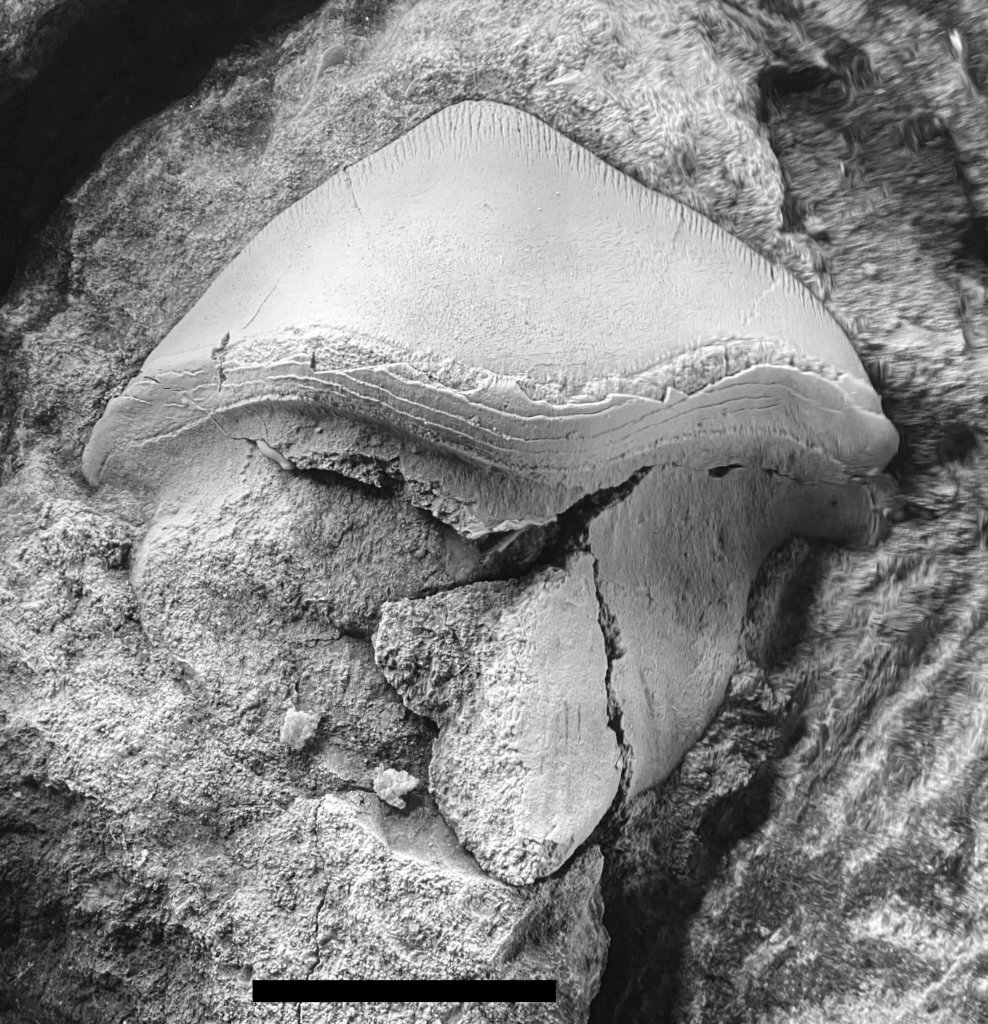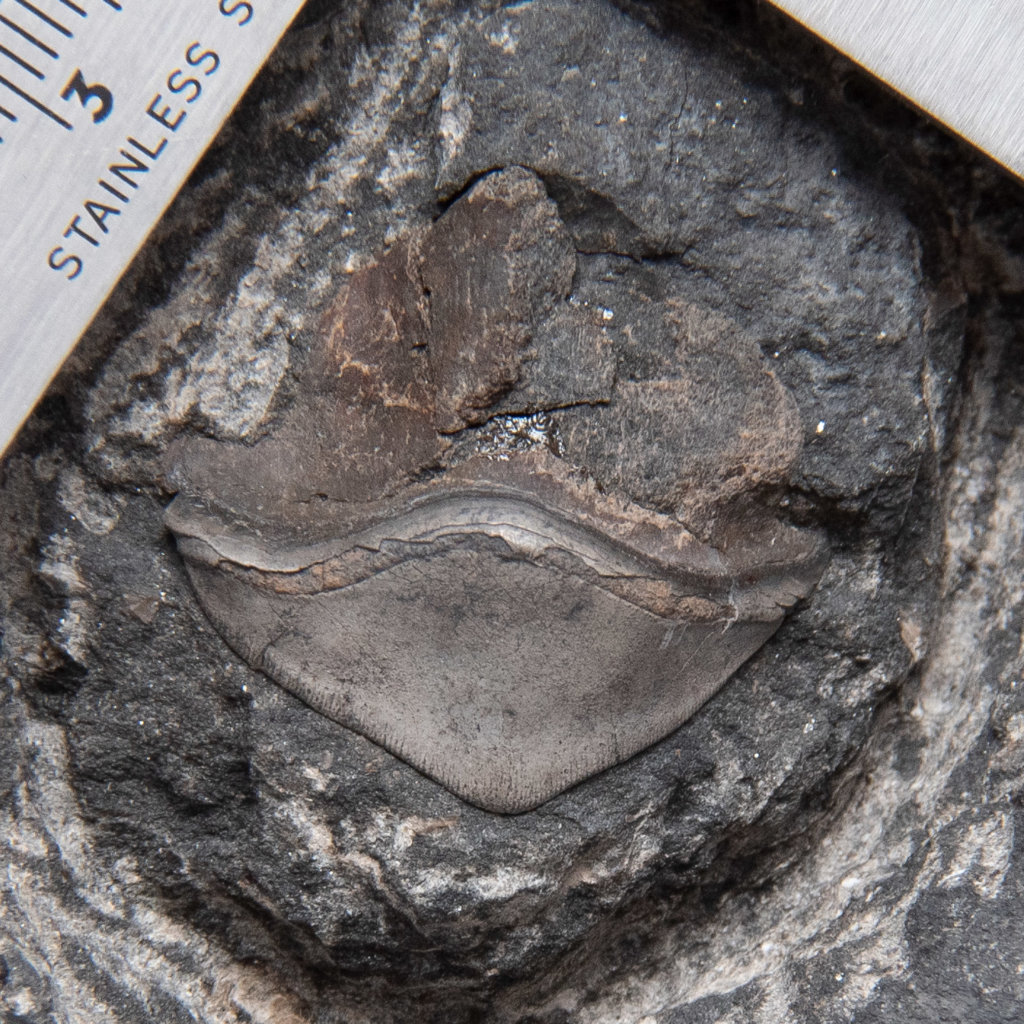Catalog Number: CG-0055
Petalodus ohioensis tooth number 10 is a beautiful specimen. It’s well-shaped, well colored, and has a solid root. I worked the specimen with an air scribe for some time, removing the matrix from a perimeter slowly, before uncovering the tooth itself. Air scribes are useful but troublesome to work with. They are loud and vibrate heavily. When removing rock, you have to take your time and be careful you don’t mark up or break the specimen.
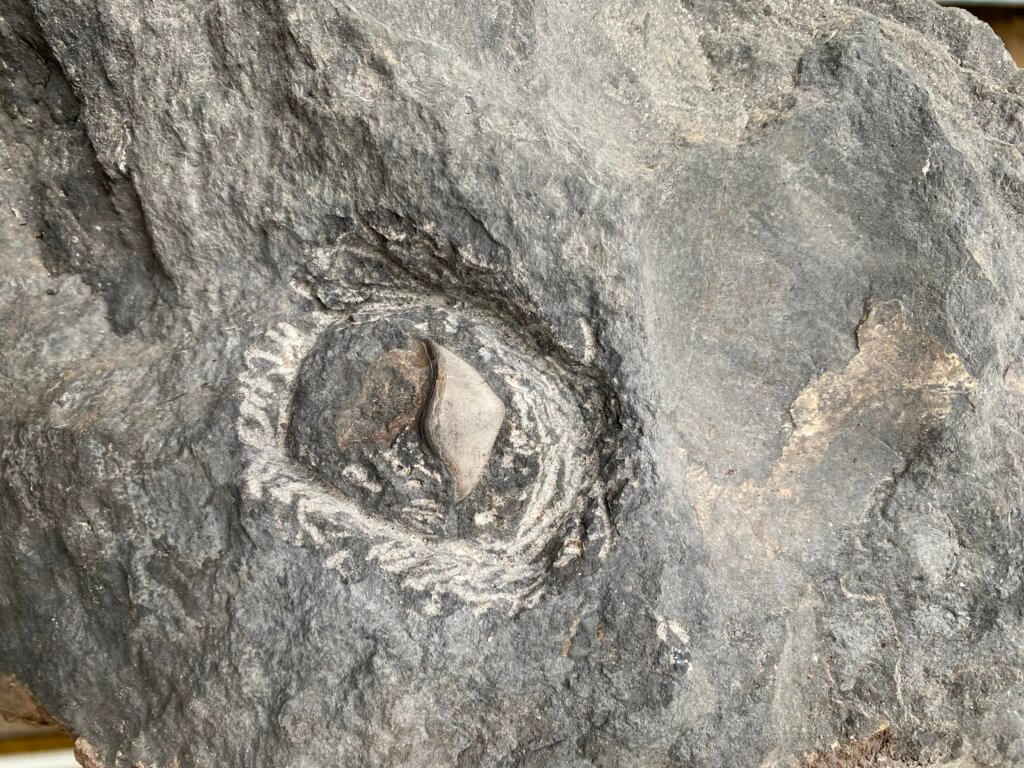

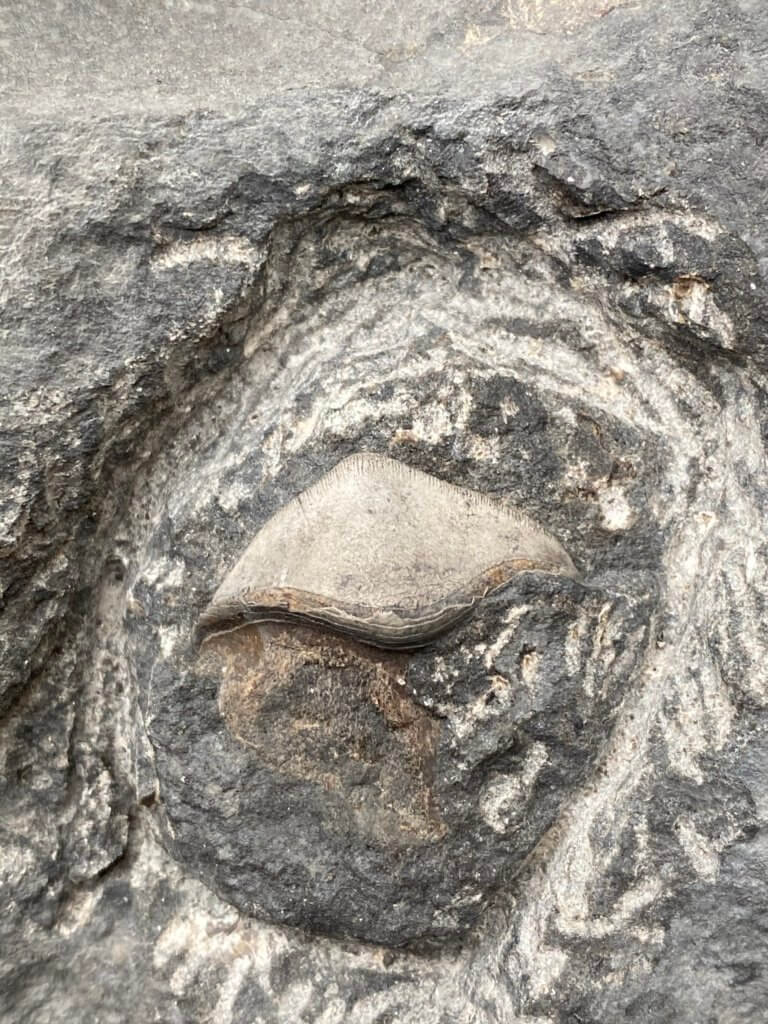
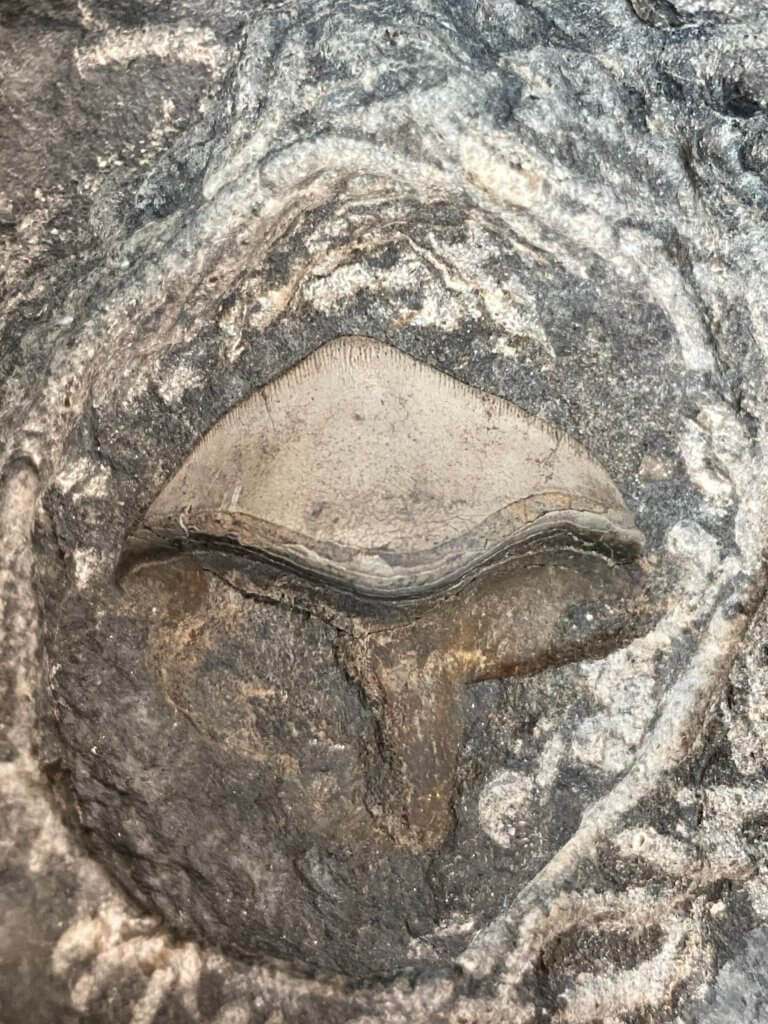
Further work with the scribe removed the crown from the matrix. I recovered the blade and a piece of root. The plan is to reattach it to the base with Paraloid B-72. It will be removable with acetone later.
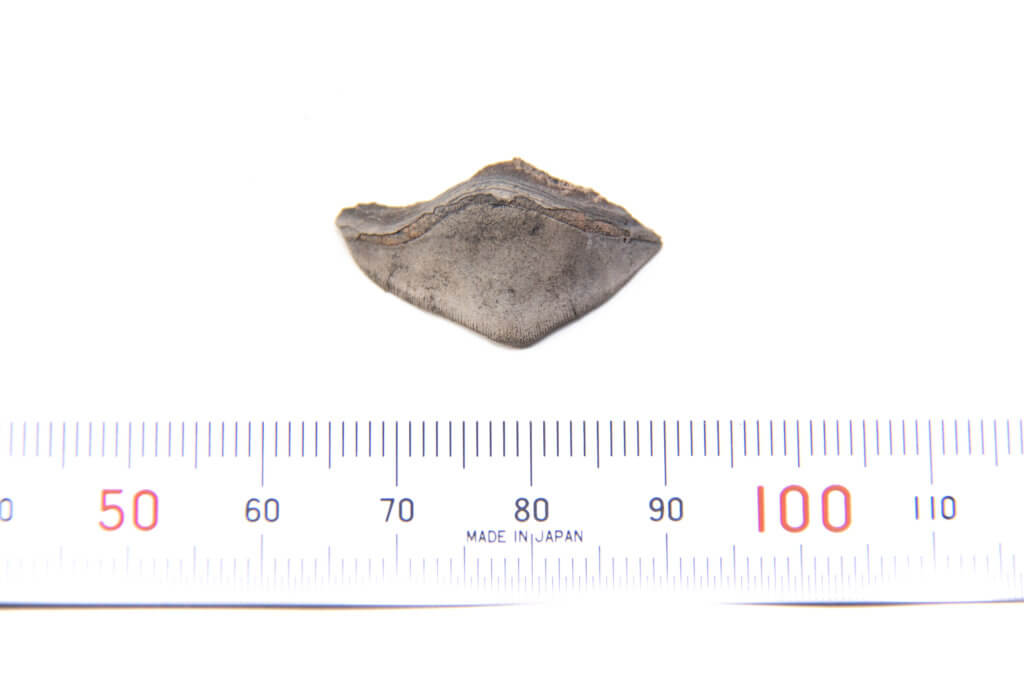

Lingual Side of Crown
Before I glued the lingual side of the crown back to the rock, I created a panoramic focus-stacked image from 18 different photos through a microscope. I only added Paraloid B-72 adhesive to the crown by the broken portion, and it could be removed again simply using acetone. The lingual side of the crown is the flat to concave side. The labial side of the crown is convex.
Crown Interior Microscopic Detail
Below is a simple focus-stacked image of three photos made through a microscope. You can see what appears to be another layer of enamel buried further in. A polished section would provide a better view.
Crown with scale
Catalog of Petalodus ohioensis specimens found to date
We keep a running list of found specimens and dimensions. This specimen has a medium-sized crown. The labial side of the crown measures 11 mm tall, while the lingual side measures 13 mm. The lingual side measures longer as its concave nature increases the distance from the cutting edge to the distal crown tongue. It also naturally sits further down into the tooth profile than the backside.
| Catalog ID | Specimen Name | Crown Height | Crown Width |
|---|---|---|---|
| CG-0015 | Petalodus I | 6mm | 23mm |
| CG-0016 | Petalodus II | 9.5mm | 24mm* |
| CG-0029 | Petalodus III | 8mm | 28mm* |
| CG-0027 | Petalodus IV | 10.5mm | ** |
| CG-0034 | Petalodus V | 14mm | 27mm* |
| CG-0038 | Petalodus VI | 5.5mm*** | ** |
| CG-0045 | Petalodus VII | 10mm | 25mm |
| CG-0047 | Petalodus VIII | 13mm | 31mm |
| CG-0048 | Petalodus IX | **** | ** |
| CG-0055 | Petalodus X | 11mm† | 28mm |
| CG-0058 | Petalodus XI | 8mm† | 27mm |
| CG-0070 | Petalodus XII | **** | ** |
| CG-0087 | Petalodus XIII | 9mm | 23mm |
| CG-0102 | Petalodus XIV | Coming Soon | Coming Soon |
| CG-0107 | Petalodus XV | Coming Soon | Coming Soon |
* – Measured based on symmetry. One side broken/obscured.
** – Unable to measure, both sides were broken.
*** – From the top of the distal crown tongue.
**** – Unable to measure, crown broken.
† – Measured from the labial side.

